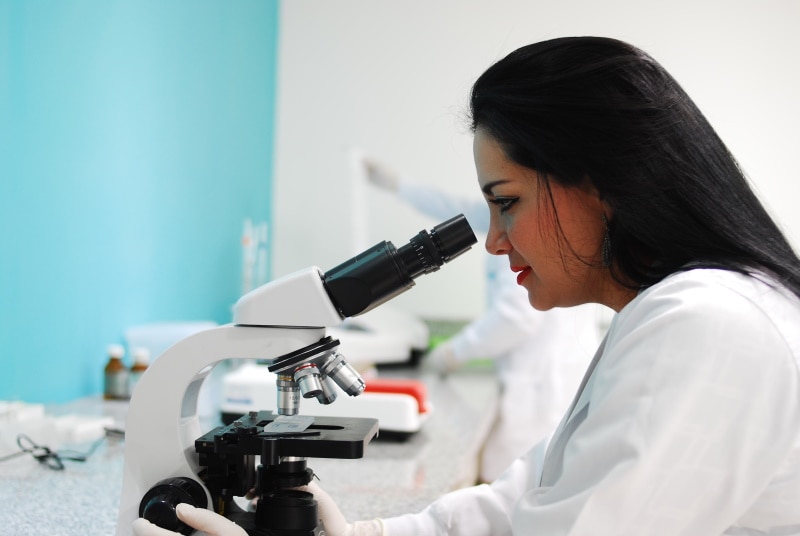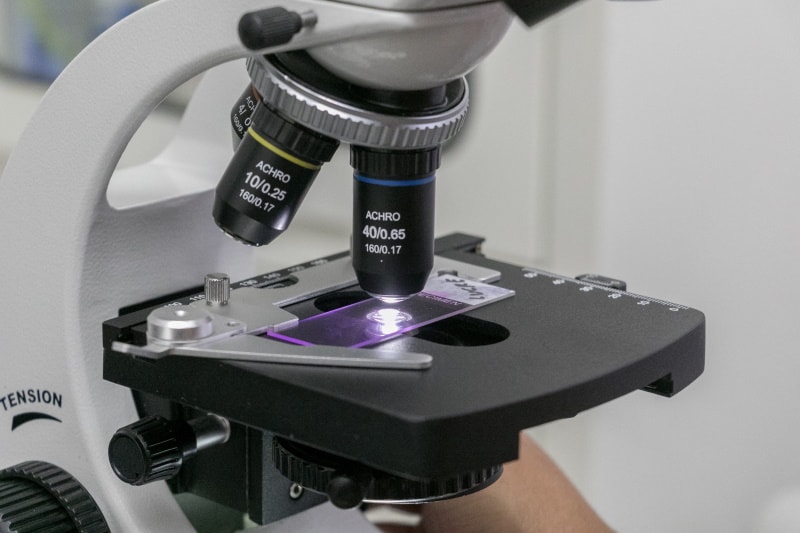What Does Water Look Like Under a Microscope? The Interesting Answer!
Last Updated on

We all know that good old H2O is the basis for all living things (in conjunction with light). Its hydrogen and oxygen bond together and can form into ice crystals when cold enough or evaporate if hot enough. But have you ever wanted to see what’s on the inside of the water? Have you ever thought of what water looks like under a microscope? Maybe there are microorganisms, or maybe we can see what is deep inside each water molecule.
But you don’t have to search any longer because we’ve got the details to show you what water really looks like up close!

Before We Start
First, there is some complication with the question of what water looks like at the microscopic level.
Before taking a swim, we need to know what kind of water we are looking at. Is the specimen ocean saltwater? Is it freshwater from a lake? Is it purified bottled water? Is it plain old H2O? After all, these samples would all look a bit different because not all of them are purely hydrogen and oxygen.
Furthermore, what is the magnification of the microscope and its field of view (FOV)? These factors determine whether we’re looking at the surface of water or if we’re looking at something at an even smaller scale.
We’ll discuss each of these variables below so you can see what they all look like!

So…What Does It Look Like?
Up close, the most striking property of water is that it actually magnifies your view even farther than what you’d normally see. The light passing through water molecules creates a convex lens effect, bending the light and warping the image.
What’s more interesting is that there are a ton of microorganisms that can be found while using high magnification power microscopes. Bacteria such as water bears, algae (from pond water, seawater, etc.), mold, pollen, and much more are hidden from the naked eye. In some circumstances, you’ll, unfortunately, come across microplastics when looking at ocean water.

Can You See Water Molecules Under a Microscope?
Most of us know that water is made up of a single hydrogen atom and a couple of oxygen atoms. You might think that if we have powerful technology such as electron microscopes, we should be able to see the individual molecules themselves. However, this isn’t the case. Molecules of any kind are extremely small, so small that we can’t even see them with the highest-end transmission or scanning electron microscopes.


Conclusion
To see water crystals with a microscope, you’ll certainly want your apparatus to have a magnification of at least 100X, but you may need more to see extra details. Remember though, that to see water crystals, the environment may require additional changes.
Featured Image Credit: aslysun, Shutterstock
About the Author Robert Sparks
Robert’s obsession with all things optical started early in life, when his optician father would bring home prototypes for Robert to play with. Nowadays, Robert is dedicated to helping others find the right optics for their needs. His hobbies include astronomy, astrophysics, and model building. Originally from Newark, NJ, he resides in Santa Fe, New Mexico, where the nighttime skies are filled with glittering stars.
Related Articles:
What Is the Best Binocular Magnification for Hunting? Optical Features Explained
Can You Use Binoculars to Look At Stars? How to Choose the Right Pair
How to Clean a Refractor Telescope: Step-by-Step Guide
How to Clean a Telescope Eyepiece: Step-by-Step Guide
How to Clean a Rifle Scope: 8 Expert Tips
Monocular vs Telescope: Differences Explained (With Pictures)
What Is a Monocular Used For? 8 Common Functions
How to Clean a Telescope Mirror: 8 Expert Tips
